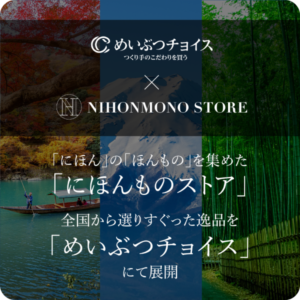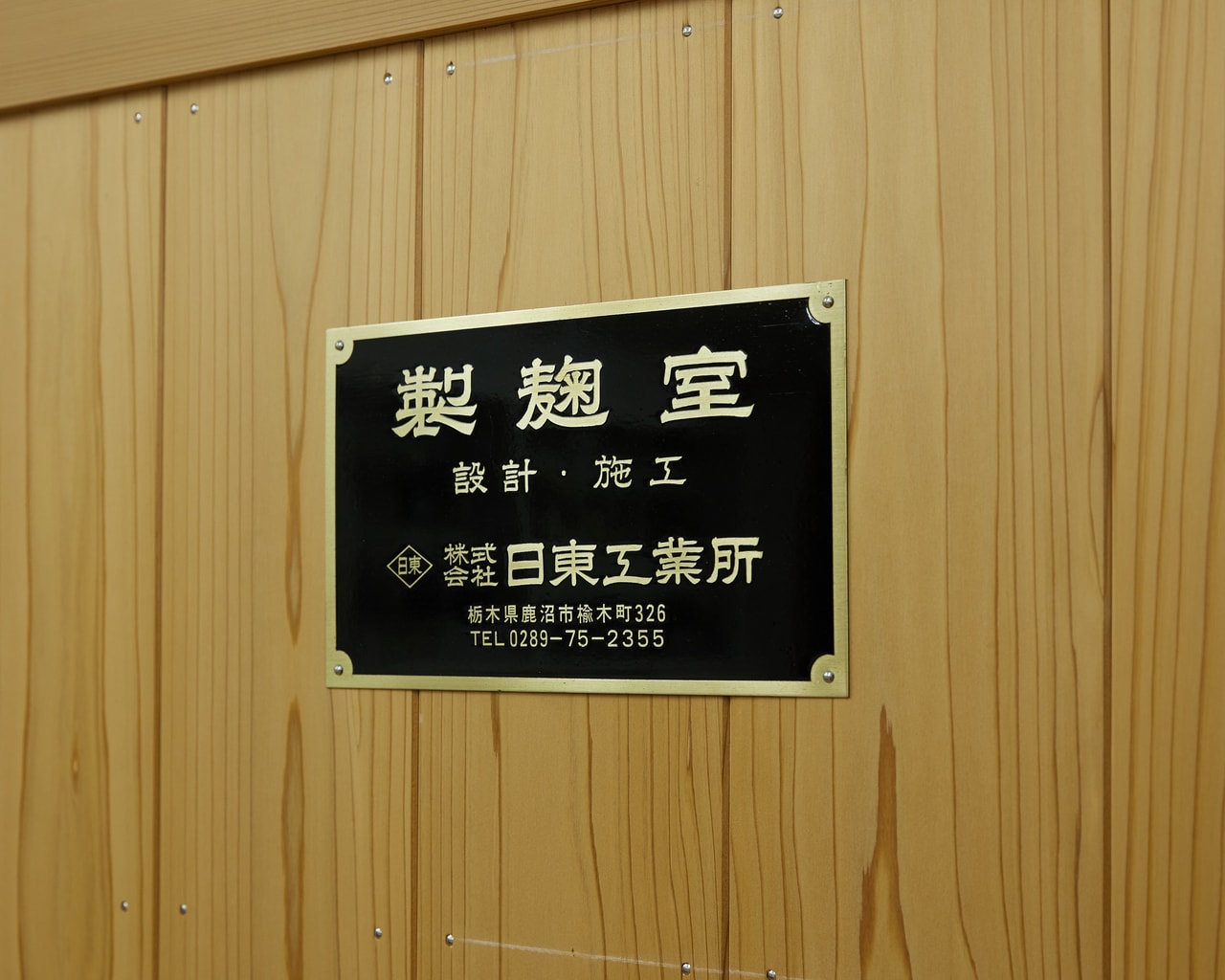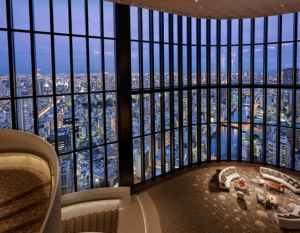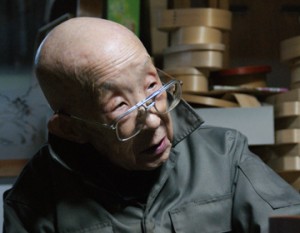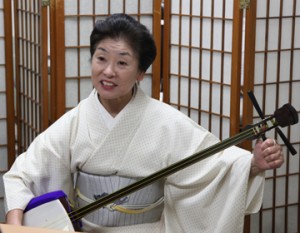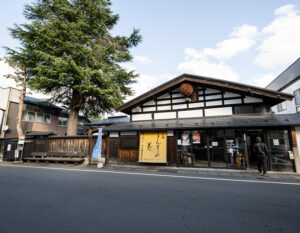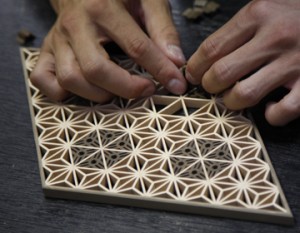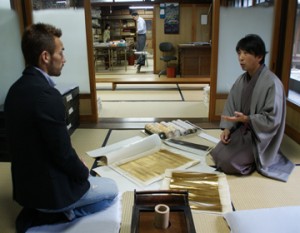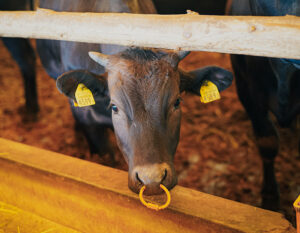The saying “i koji, ii moto, sansaku” (one for koji, two for yeast, and three for sake making) expresses the importance of sake making in order of importance. The room where koji is made is called “koji-muro,” and because of its importance, it has been considered a sacred place. So where is the koji room located and how is it made? In fact, the leading manufacturer of koji room design and construction is located in Kanuma City, Tochigi Prefecture.
Translated with DeepL.com (free version)
Kanuma, a woodworking town that gave birth to the top manufacturer of “koji molds
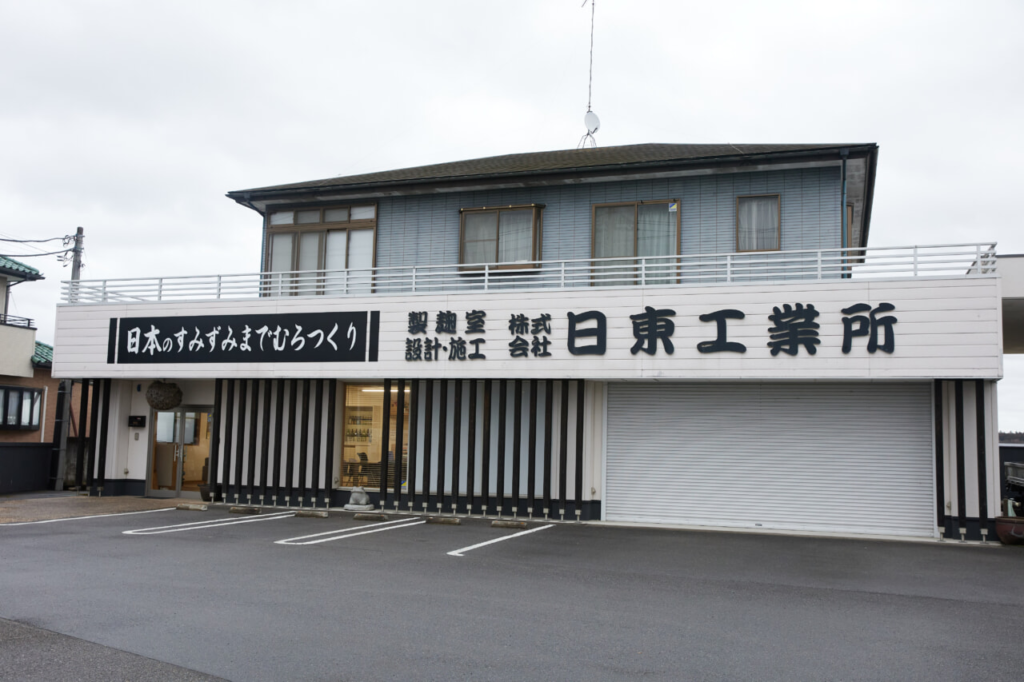
Kanuma City, Tochigi Prefecture. Located on the west side of Tochigi Prefecture, the city is rich in nature, with approximately 70% of the city covered in forests, and is also known as the “City of Woodworkers. Even today, the city is rich in timber resources such as high-quality cedar and cypress, and during the Edo period (1603-1867), when Nikko Toshogu Shrine was built, Kanuma was a busy post town along the Nikko West Highway and the Reiheishi Kaido (road for envoys to Nikko). At that time, skilled craftsmen from all over Japan introduced woodworking techniques to the area, and later, woodworking production expanded due to increased demand from the Great Kanto Earthquake and postwar reconstruction efforts. As the city continued to develop, it became a “town of woodworkers.
Nitto Kogyosho, headquartered in Kanuma City, has been involved in the design and construction of cedar-shingle “koji rooms” for more than 50 years since its establishment in 1972, and has built a total of more than 500 such rooms. As one of only two companies in Japan specializing in koji rooms, Nitto Kogyosho has earned the trust of famous breweries such as Takagi Shuzo, famous for its “Jyushidai” brand, and Kobayashi Shuzo, known for its “Houou Mida” brand.
The Role of the Koji Room in Sake Brewing
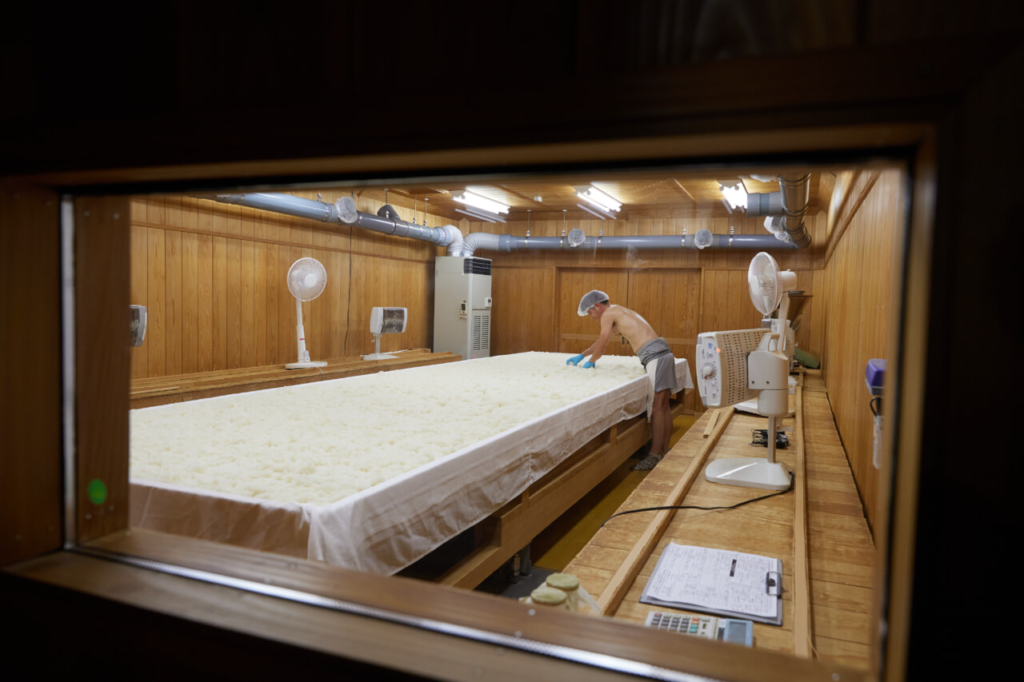
The process of making koji, which is indispensable for sake brewing. This process is called “seikiku,” and the room where koji is made is called a “seikitsu” or “koji-muro. Koji in sake is made by steaming polished rice, sprinkling koji mold on the steamed rice, and propagating the mold in the rice.
Alcoholic fermentation, in which yeast is added to the main ingredient and the yeast breaks down the sugar in the ingredient into alcohol and carbon dioxide, is essential for making sake, not just sake. However, rice, the raw material for sake, does not contain sugar, which is the source of alcohol. Therefore, it is necessary to use the power of koji, which can change the starch in rice into sugar. Koji is indispensable for the first step in making sake, and nothing can begin without it.
Once koji is completed, koji, steamed rice, water, yeast, and lactic acid bacteria are combined to make what is called “shubo” or “moto” (sake mother). This process produces a large amount of yeast necessary for alcoholic fermentation, and this yeast is the “base of sake. To the completed sake mother, water, koji, and steamed rice are added, and alcoholic fermentation and saccharification of starch take place. The liquid from this fermentation process is called “moromi,” and sake is made through processes such as straining, filtering, and fire-quenching. Because koji is essential in each step of the sake making process, its quality has a great impact on the flavor.
Koji mold is a living thing. What is the environment they enjoy?
Koji contains enzymes that not only convert starch into sugar (saccharification), but also break down proteins into amino acids. The amino acids produced in this process are the source of sake’s flavor and depth, and have a significant impact on its taste. Good koji” is also important to have a lot of vigorous koji fungi that actively produce saccharification and enzymes that break down proteins into amino acids.
However, koji mold is a kind of fungus called “koji mold” and is a delicate creature. Good koji is said to be produced when the fungus extends its mycelium not only to the surface of the rice but also to the center of the rice, so that the ingredients produced can be stored in the center of the rice.
That is why it is important to keep koji thoroughly warm, ventilated, and temperature-controlled, and to control it in detail in koji production. It is said that the ideal environment for koji propagation is about 30°C in temperature and about 60°C in humidity. Furthermore, koji mold generates heat and carbon dioxide gas when it breathes, so it is important to control the temperature and ventilation so that the temperature does not rise too high. Naturally, one must also be careful not to allow other bacteria to enter. In particular, natto bacillus has a strong reproductive capacity, and if it is allowed to invade, it will multiply before the koji bacillus, and there is a risk that the koji will become like natto. Moreover, once the natto bacillus has entered, it is difficult to remove it even by sterilizing with boiling water. This is why, now and in the past, sake brewers did not eat natto during the sake brewing process, and the koji room in particular was considered a sacred place that only the toji (master brewer) and a limited number of kurabito (brewer’s staff) were allowed to enter.
How the indoor environment is maintained and adjusted greatly affects the propagation of the living thing called “koji mold. That is why a koji room should not be just an isolated room. It must have not only a high level of insulation that is not easily affected by outside temperatures, but also ventilation that can maintain temperature and humidity, air flow, and other facilities that can make minute adjustments while keeping an eye on the condition of the “living” koji fungi.
A comfortable space for both people and koji, created by high quality wood
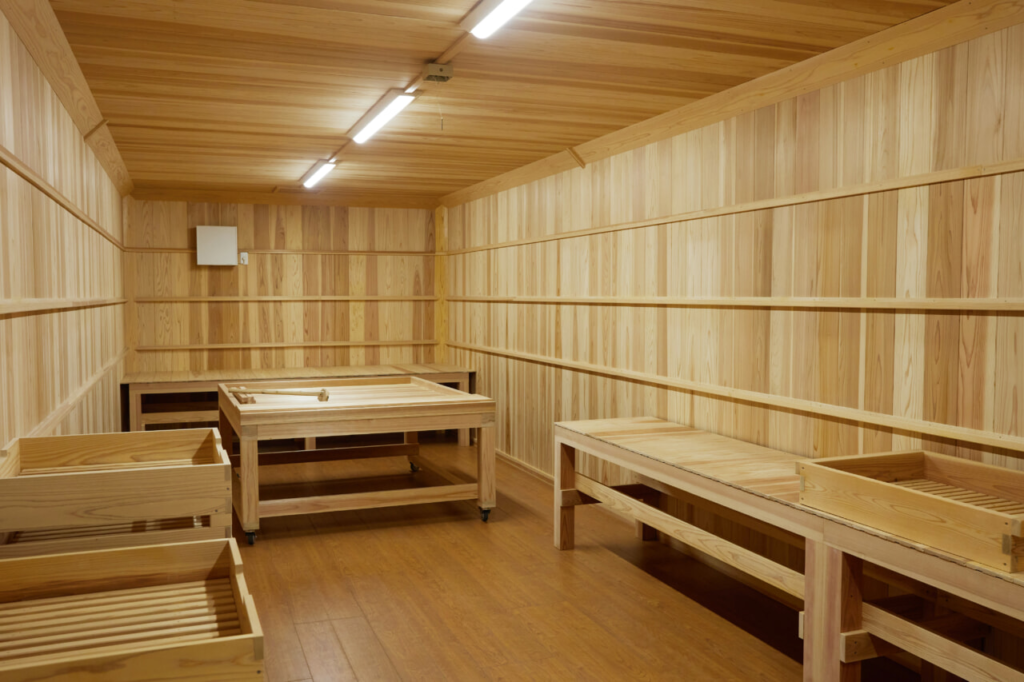
The Koji Room by Nitto Kogyosho features cedar plank construction. The walls, floor, and ceiling are all made of natural cedar wood, offering a space enveloped by the warmth of wood. The company is currently led by Kazushi Otsuka, the second president. More than 50 years ago, when there were still four or five companies in Japan that handled koji rooms, Otsuka’s father became independent from one of those companies. Kanuma City, where the company is located, has been a “woodworking town” since the company was founded. The fact that lumber sawing and processing were thriving in the area and that it was easy to purchase high-quality lumber from all over Japan from a relative who runs a lumber store led to the company’s use of cedar boards in the koji room.
Among all kinds of wood, Nitto Kogyosho chose “Akita cedar. Akita cedar, which grows slowly over time in cold regions, has fine annual rings and is considered a high-quality building material with little twisting or distortion. Therefore, we thought it would be suitable for use in the Koji Room, which is subject to high temperature and humidity.
Is it necessary to use wood in the Koji Room?
Otsuka says, “Koji room itself can be made with materials other than cedar panels. Certainly, there are many koji rooms made of stainless steel panels in the world. Stainless steel probably eliminates the worry of naturally occurring changes such as twisting and distortion of wood. However, Otsuka still recommends a koji mold room made of cedar panels. The reason for this is the natural humidity control effect of the wood’s respiration. Another reason is his strong belief that “koji is a living thing. Just as people feel comfortable when they spend time in nature, koji, which is alive, must be the same way. The thought that koji grown in a comfortable space will be better is the source of the proposal of a koji room made of cedar planks.
Cedar planks are not the only thing that Nitto Kogyosho insists on. In winter, when sake brewing is conducted, airtightness and heat insulation are also extremely important to keep the temperature inside the koji room warm, no matter how cold it is outside. For example, a door that closes firmly and snugly is a necessary specification for airtightness. Sometimes, fine air flow is noticed only after the actual koji making process has started. For this reason, the airtightness and heat insulation are thoroughly adjusted after the sake brewing process has started.
Nitto Kogyosho’s koji room production techniques are improving year by year. Repeated improvements have been made in everything from construction methods to the nails and screws used, and the construction period has been shortened. Employees from as far north as Hokkaido and as far south as Kyushu stay overnight at the site for a month or more during construction. In the past, they experienced some failures, such as too much cold air entering the room, but now they receive compliments such as, “It is now easier to raise the temperature. Some sake breweries use both wooden and stainless steel koji molding rooms, but the traditional cedar plank koji molding room, which is expected to have a natural humidity control effect, is trusted more than ever. Some sake breweries are proud to say that they had Nitto Kogyosho install their koji rooms. Toji (master brewers) and brewers have been involved in koji making for hundreds of years. The fact that Nitto Kogyosho is supported by so many sake breweries is proof that we have continued to meet their strict eyes and high expectations.
Now and in the future, everything we do is for the sake of “Okura-san.
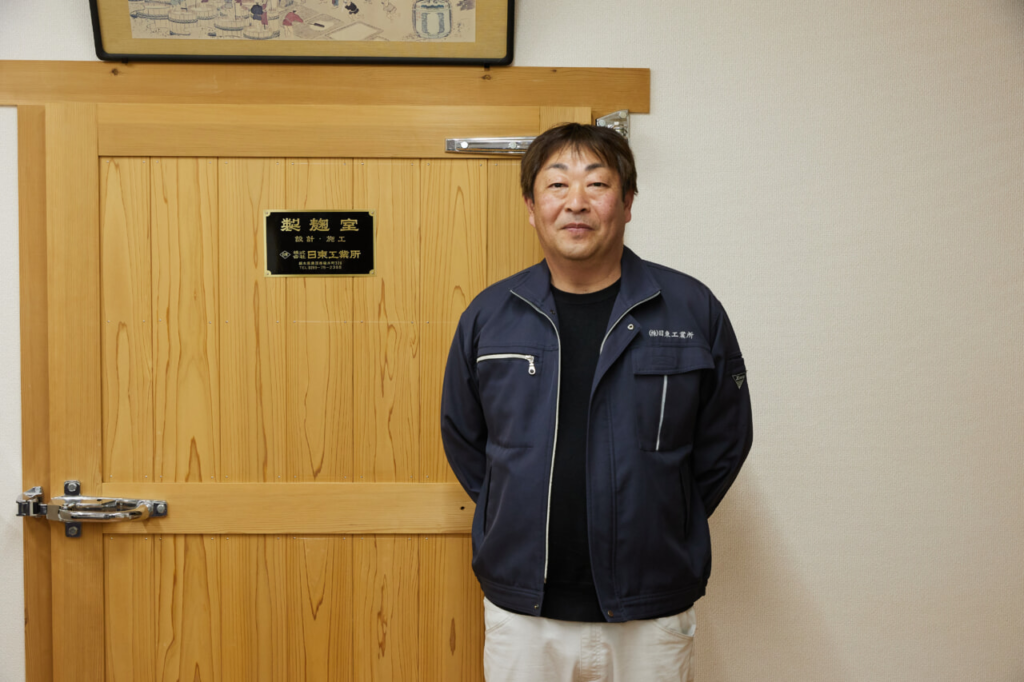
According to Mr. Otsuka, making koji mold is a business that depends on the sake brewery. He draws up a plan according to the policies and values of each brewery, such as how much sake the brewery wants to produce, how much rice will be drawn into the koji room to achieve that, and what kind of koji they want to make. He said, “Since I was young, the breweries have taught me so much. That has really been an asset,” says Otsuka. In the future, he would like to do something useful for the sake breweries that have been so kind to him, and he is pondering how to do it.
Currently, 90% of his clients are in the sake industry. There are currently about 1,100 sake breweries in Japan, and Nitto Kogyosho has installed a cumulative total of over 500. In addition to sake, there are also requests from miso and vinegar brewers. In recent years, in addition to designing and constructing koji rooms themselves, the company has also been focusing on manufacturing and selling wooden products such as koji boxes for use inside the rooms. The company’s future challenge and goal is to increase the number of orders for these products and to be able to handle work in industries other than sake. Despite being a top manufacturer, Nitto Kogyosho is never conceited, and continues to be close to the brewer’s wishes. The koji room, surrounded by cedar trees and overflowing with the gentle warmth of nature, seems to be a manifestation of the company’s image.
